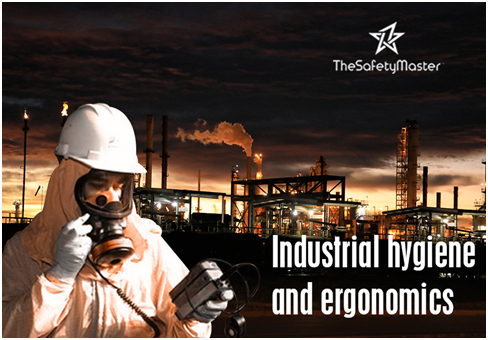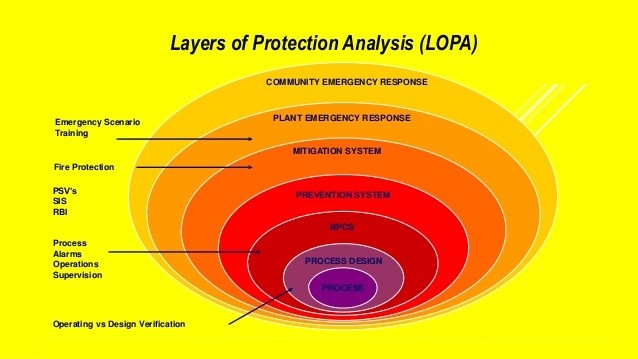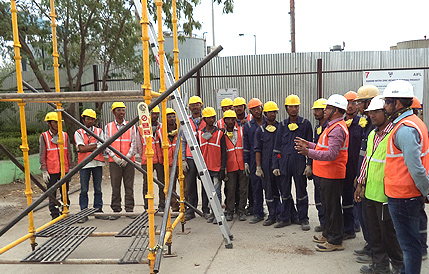Ensuring Workplace Safety: The Importance of an Industrial Hygiene Audit

HAZOP vs. What-If Analysis Study
October 18, 2023
How Process Hazard Analysis Plays a Crucial Role in the Indian Process Sector
October 19, 2023Ensuring Workplace Safety: The Importance of an Industrial Hygiene Audit
In this article, we delve into a critical aspect of organizational well-being that often goes unnoticed – workplace safety. Ensuring the utmost safety measures within industrial settings is paramount, and one effective tool to achieve this is through an industrial hygiene audit. Join us as we explore the importance of this comprehensive evaluation, shedding light on potential hazards and sharing insights on how implementing an audit can create a safe and healthy work environment. Stay tuned for expert strategies, valuable insights, and a promise of safeguarding your team’s well-being. Safeguard today, thrive tomorrow.
Introduction
Every day, millions of individuals around the world head to their workplaces, hoping to fulfill their professional duties and provide for themselves and their loved ones. However, amidst the hustle and bustle of work, one crucial aspect often gets overlooked – workplace safety. The well-being of employees should always be a top priority for any organization, as it not only ensures their physical health but also contributes to increased productivity and overall success.</p><p>In this article, we will delve into the significance of an industrial hygiene audit in ensuring workplace safety. We will explore how this proactive approach helps identify potential hazards and risks within the work environment. By implementing effective measures based on these audits, organizations can create a safe and secure space for their employees to thrive
Understanding Industrial Hygiene Audit
In grasping the essence of an industrial hygiene audit, we delve into the intricate realm of safeguarding occupational health. It entails an in-depth examination and assessment of work environments to identify potential hazards and risks that may jeopardize the well-being of employees. This meticulous process requires a comprehensive understanding of industrial hygiene principles, encompassing aspects such as air quality, chemical exposure, ergonomics, noise levels, and physical hazards.
A captivating facet lies in how an industrial hygiene audit serves as a powerful tool for proactive risk management. By meticulously analyzing workspaces through this lens, organizations can not only mitigate potential harm but also cultivate a culture of safety and well-being among their workforce. This fundamental understanding enables them to develop tailored strategies and implement robust controls that effectively minimize risks pertaining to physical harm or long-term health effects.
The Role of Workplace Safety
In the realm of industrial hygiene audits, workplace safety assumes a paramount position. It serves as the foundation upon which a company’s operations thrive, ensuring the well-being and security of its employees. By prioritizing workplace safety, organizations create an environment that fosters productivity, innovation, and employee satisfaction.
A safe workplace not only protects individuals from physical harm but also cultivates a sense of trust and confidence among employees. When workers feel secure in their surroundings, they are more likely to engage actively in their tasks and collaborate effectively with their colleagues. This positive atmosphere promotes a harmonious work environment where creativity can flourish, leading to increased efficiency and overall success.
Furthermore, investing in robust workplace safety measures demonstrates an organization’s ethical commitment to its workforce. It signifies that management acknowledges the value of human capital and places great importance on preserving the health and well-being of its employees. By prioritizing safety, companies inspire loyalty among their staff members who feel valued and appreciated for their contributions.
Identifying Hazards and Risks
Within the realm of workplace safety, identifying hazards and assessing risks plays a pivotal role in maintaining a secure environment for employees. Through a comprehensive industrial hygiene audit, potential hazards can be recognized, categorized, and prioritized for effective mitigation measures. This process involves keen observation and meticulous analysis of the work environment, including physical factors such as noise levels, air quality, ergonomics, and potential chemical or biological exposures.In recognizing hazards and risks within the workplace, employers demonstrate their commitment to employee well-being while fostering a culture of safety. By proactively identifying these potential dangers, companies can implement tailored strategies to eliminate or minimize them. This enhances not only the physical safety but also the psychological well-being of employees—an aspect often overlooked but crucial for overall productivity and job satisfaction.
A thought-provoking content:
In the ever-evolving world of workplace safety, conducting an industrial hygiene audit brings forth a multitude of benefits that cannot be overlooked. Firstly, such audits provide a comprehensive assessment of potential hazards and risks within a given workplace environment. By meticulously examining the various aspects that impact employee health and safety, audits help identify even the most hidden dangers, ensuring a proactive approach to preventing accidents.
Furthermore, industrial hygiene audits actively contribute to enhancing employee morale and productivity. When employees feel secure in their workspaces and confident in their employers’ commitment to their well-being, it fosters a positive work culture. This cultivates trust among team members and allows them to focus on their tasks with optimism and enthusiasm.
Lastly, conducting regular industrial hygiene audits showcases an organization’s dedication towards compliance with regulatory standards. By implementing effective control measures to mitigate risks identified during the audit process, companies demonstrate their commitment to upholding legal requirements. This not only protects employees but also fosters strong relationships with regulatory bodies, positioning the organization as a responsible corporate citizen.
In conclusion, embracing the benefits of conducting an industrial hygiene audit not only safeguards employee health but also empowers organizations with valuable insights towards creating safer work environments. Such proactive measures instill confidence in employees while promoting overall productivity and compliance within the industry. Embracing these advantages ensures that workplaces become havens where employees thrive amidst assurance and security.
Monitoring and Evaluation of Workplace Safety
Regular monitoring and evaluation of workplace safety is essential to ensure the effectiveness of an industrial hygiene audit. It allows organizations to identify any gaps or shortcomings in their safety measures and take prompt actions to rectify them. By conducting routine inspections, supervisors can observe firsthand the adherence to safety protocols, identify potential hazards that may have been overlooked, and address them proactively.Monitoring workplace safety not only helps in preventing accidents but also promotes a culture of continuous improvement. It provides an opportunity for employees to actively participate in creating a safer working environment by reporting near misses or potential hazards they come across. This open line of communication fosters a sense of ownership among the workforce, boosting morale and overall productivity.
The Role of Technology in Industrial Hygiene Audits
Advancements in technology have revolutionized the field of industrial hygiene audits, making them more efficient and accurate than ever before. Cutting-edge sensors and monitoring devices now allow for real-time data collection, enabling a comprehensive understanding of workplace hazards. These technological marvels can detect various factors such as air quality, noise levels, temperature, and even biological contaminants.
By embracing technology in industrial hygiene audits, companies demonstrate their commitment to ensuring a safe working environment for their employees. The integration of advanced sensors and intelligent systems not only enhances safety protocols but also improves overall productivity by minimizing downtime caused by accidents or health-related issues. Ultimately, investing in state-of-the-art technology cultivates an optimistic culture where workers feel empowered and confident in their workplace surroundings.
Conclusion
In conclusion, the implementation of an industrial hygiene audit is vital for ensuring workplace safety. By identifying and mitigating potential hazards and risks, businesses can create a secure environment for their employees. This not only protects workers from harm but also fosters a sense of trust and satisfaction within the organization. With advancements in technology, conducting thorough audits has become more accessible and efficient than ever before. Embracing this proactive approach to workplace safety not only demonstrates a commitment to employee well-being but also contributes to overall productivity and success. Let us strive towards creating work environments that prioritize safety while inspiring individuals to reach their full potential.
At TSM TheSafetyMaster Private Limited we offer following services
TSM TheSafetyMaster® Private Limited
Unit No 221-451-452, SPL1/J, 2nd & 4th Floor, Sunsquare Plaza Complex, RIICO Chowk, Bhiwadi 301019, Rajasthan, India
Phone: +91 1493 22 0093
Mobile: +91 7665231743/9413882016
Email: info@thesafetymaster.com



